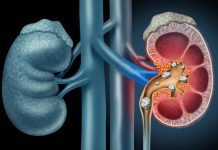
(AscendHealthy.com) – Some conditions are easier to recognize than others, but when symptoms are unusual or difficult to pin down, getting a solid diagnosis can be difficult. Awareness efforts can help spread the word on some of the more common diseases we may not recognize, but there are still numerous conditions that require our attention.
Neurofibromatosis (NF) affects over 2.5 million people, and yet few people even know it exists. Part of the problem is the broad array of symptoms it can cause. We’ve compiled a list of ways for NF sufferers to identify the source of their symptoms and help spread awareness to others.
What Is NF?
NF is a genetic condition that causes tumors to form along certain nerves, leading to painful symptoms and complications. Some cases are inherited, with sufferers having a 50% chance of passing it on, while others occur due to spontaneous mutations in egg or sperm cells. According to Mayo Clinic, most tumors related to NF are benign, but they can occasionally become cancerous.
This condition isn’t always easy to recognize, and symptoms may vary slightly depending on the subtype. There are three different types of the disease: NF1, NF2, and Schwannomatosis.
NF1
The most common form of the disease, NF1, makes up the bulk of NF cases. It is believed to affect as many as 1 in 3,000 people. Doctors identify most cases based on the following symptoms:
- Café au lait skin spots, or dark, unraised brown spots on the skin.
- Neurofibromas, or small, benign tumors, may be present on or just beneath the surface of the skin.
- Freckling may occur in the armpits or groin area.
- Learning disabilities occur in about 50% of cases.
- Curving of the bones or spine can also sometimes occur.
Doctors diagnose many NF1 cases in childhood, but milder cases may slip through the cracks.
NF2
About 1 in 25,000 people has this form of the disease. Symptoms specific to NF2 include:
- Sufferers develop vestibular schwannomas, benign tumors along the eighth cranial nerve, leading to problems with balance.
- Hearing loss is common.
- Some patients develop cataracts and other eye issues.
- Benign brain and spinal tumors may also occur.
Doctors catch about 10% of these cases in childhood, and the rest usually become evident by the time patients are young adults.
Schwannomatosis
The rarest of all NF types, Schwannomatosis affects about 1 in 40,000 people. The development of benign tumors called schwannomas on the nerves and spinal cord characterizes this subtype of the disease. It may cause:
- Pain, tingling, and numbness
- Muscle weakness
- Loss of muscle function
Vestibular schwannomas may also occur with this form of the disease.
NF Management
Treatment options are currently limited, but new medications could soon become available to help control tumor growth. In cases where pain or impairment are problems, surgery may be necessary. Some people may require the use of pain meds.
NF might not be on many radars, but it’s more common than numerous other genetic conditions. In fact, more people have it than those with cystic fibrosis, muscular dystrophy, Tay-Sachs, and Huntington’s disease combined. Diagnosis is dependent on symptom identification, which makes spreading awareness all the more critical. Specialists are available to help.
~Here’s to Your Healthy Ascension
Copyright 2024, AscendHealthy.com




















